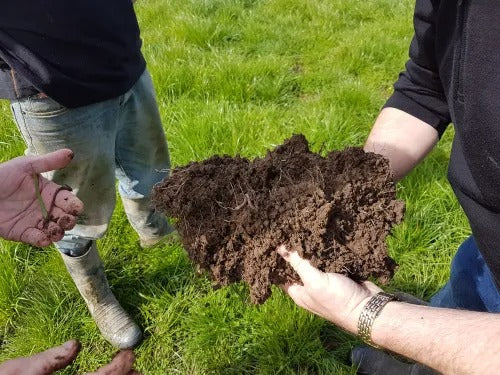Around the world we are seeing an increase in the amount of both Biotic and Abiotic Stress brought on by several factors particularly global warming. Biotic stress refers to increased insect and disease impact on crops and soil and abiotic stress is defined as the negative impact of non-living factors on living organisms in a specific environment. The stresses include drought, salinity, low or high temperatures, and other environmental extremes. The multifactorial impact of all these events lead to loss of precious topsoil and severely impact soil biology. This shows the urgent need for building more resilience in our soils.
What is a resilient, healthy soil?
 A resilient soil can recover from or adapt to stress, and the health of the living/biological component of the soil is crucial for soil resiliency. The living component of soil commonly referred to as ‘Soil Biology or Biota’ is by fraction, a small part of the total soil makeup, but it is essential to many soil functions and overall soil quality, these key functions are:
A resilient soil can recover from or adapt to stress, and the health of the living/biological component of the soil is crucial for soil resiliency. The living component of soil commonly referred to as ‘Soil Biology or Biota’ is by fraction, a small part of the total soil makeup, but it is essential to many soil functions and overall soil quality, these key functions are:
- Nutrient provision and cycling
- Pest and pathogen protection
- Production of growth factors
- Water availability
- Formation of stable aggregates to reduce the risks of soil erosion and increase water infiltration
The Rhizosphere, the crucial top layer of what we call soil where most of the action happens, consists of a nutrient-rich region of the soil immediately surrounding the plant root systems. This region is highly dynamic and supports what is often referred to as the Soil Food Web. It is a zone where we see many complex ecological interactions between the plant and soil microbes that enhance crop health and resilience. Most notably is where plants release different compounds from the rhizosphere into the soil called root exudates. Root exudates contain a wide variety of molecules released by the plant into the soil. They act as a signaling messenger that allows for communication between soil microbes and plant roots. Exudates influence several factors within the soil such as nutrient availability, soil pH, and recruitment of bacteria and fungi.
Ultimately, soil health and resilience will rely on maintaining functionally diverse, robust soil biological communities. Soil biodiversity has been strongly associated with key ecosystem functions such as decomposition and nutrient cycling so adding products that boost and support these types of functions goes a long way to creating soil biological diversity needed to build resilience. Some agricultural management practices can have negative effects on soil health, while other practices are more conducive to soil biological health.
 Factors that affect healthy Soil Biology
Factors that affect healthy Soil Biology
Factors that can reduce the soil biological function:
- Cultivation
- Use of chemicals - use of pesticides, fungicides, herbicides and many chemical fertilisers
- Excessive moving and handling of soil
- Extreme weather
How to create a healthy and functioning Soil Ecosystem
It is very important that all the organisms that a plant requires are present and functioning and they are fed and stimulated. Ensure there is a ready and ample supply of organic matter being recycled into the soil. This is the food for the microbes. Biologically friendly fertilisers help soil biology thrive and provide another food source. Increasing microbial diversity in the soil is also very important. This enhances the breakdown of organic matter with both bacteria and fungi playing an important role and biological activity in general creating a healthier soil environment where microbes are stimulated. In order to get microbial diversity in the soil we can plant mixed pasture swards, use biologically friendly fertilisers or add biology directly through bio-stimulants or other biological inoculants like EM. EM works by getting the natural processes to function, the way nature intended by stimulating biological activity in the soil. EM will not only add to the microbial population but will also stimulate resident microbes. This stimulation can lead to increasing the resident nitrogen fixation capacity directly through the increase of N fixing bacteria, and indirectly by increasing clover growth, increasing mycorrhizal activity and other fungal and earthworm activity.





